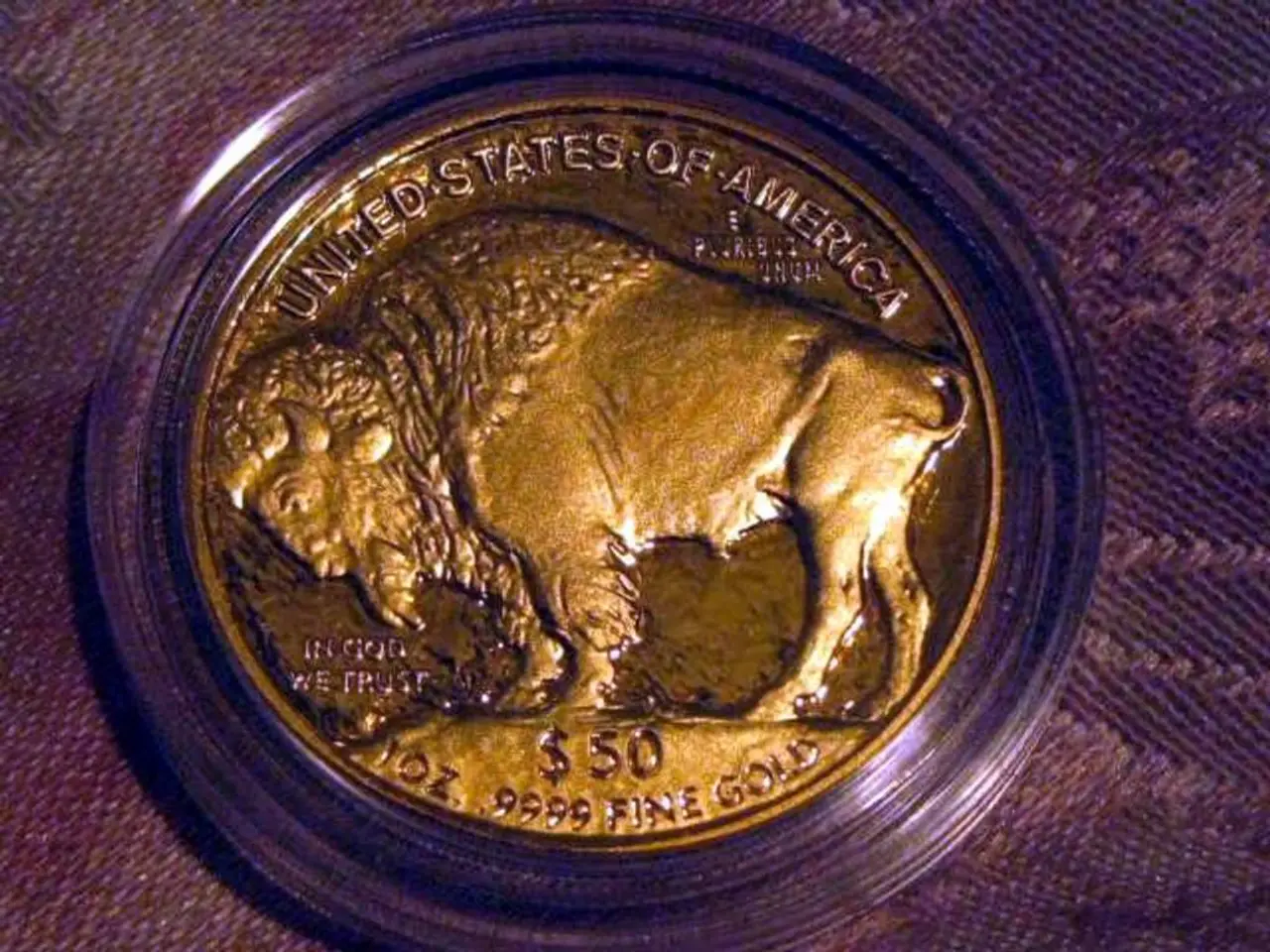Gold prices climb following a fall in the US dollar due to anticipation of interest rate cuts by the Federal Reserve.
In a significant turn of events, gold prices saw a notable increase on Wednesday, with the price for August delivery reaching $3,358.70 per troy ounce, a rise of $9.80. This surge was primarily due to a dovish signal from Federal Reserve Chair Jerome Powell and expectations of interest rate cuts this year, which weakened the U.S. dollar and boosted gold's appeal as a safe-haven asset.
Market participants anticipated two 25 basis point rate cuts this year, with the first likely in September, based on comments by Powell and the Federal Open Market Committee (FOMC) meeting minutes released. The weakening U.S. dollar, as indicated by a decrease in the U.S. dollar index, also played a crucial role in making gold cheaper for foreign buyers, pushing prices higher.
Geopolitical developments, such as easing tensions between the U.S., Ukraine, and Russia, also influenced the market. However, with uncertainty remaining, gold maintained strength as a risk hedge. Technical analyses indicated support levels near $3,290 per ounce and target prices approaching $3,400, reflecting bullish investor sentiment aligned with the dovish monetary outlook.
Meanwhile, in the housing market, the volume of mortgage applications in the U.S. soared by 10.9% for the first week of August. The Mortgage Market Index increased to 281.10 points, and the average contract interest rate for 30-year fixed-rate mortgages decreased by 10 bps to 6.67%.
In other economic news, the yield on a 2-year note ended at 3.69% for the week of August 8, while the yield on a 10-year note ended at 4.27% and the yield on a 30-year note ended at 4.85%. Core inflation for the U.S. rose by 3.1% in the year to July.
Looking ahead, investors are now readying to analyze the upcoming U.S. economic indicators this week, including PPI, jobless claims, and retail sales numbers. The Federal Reserve's decision on interest rates will be heavily influenced by these indicators.
Interestingly, the news of import tariffs to be levied on gold imports sent gold prices to record highs last Friday, but Trump's announcement that gold imports into the U.S. will not be tariffed caused gold prices to ease yesterday. If a peace accord is reached between Russia and Ukraine, geopolitical tensions could decrease, favoring global trade.
Despite pressure from the markets and the President, the US Fed has held interest rates unchanged so far. However, expectations of an interest rate cut have increased based on the U.S.'s weak non-farm payrolls and previous data.
In conclusion, the increase in gold prices and the surge in mortgage applications reflect market expectations of easier monetary policy and geopolitical developments reducing risk aversion, combined with a weaker dollar environment that makes gold more attractive. The coming week promises to be significant as investors and economists alike await the upcoming U.S. economic indicators and the Federal Reserve's decision on interest rates.
Investors might consider gold as an attractive option for investing in the stock-market, given the surge in its prices and the weakening U.S. dollar, as these factors indicate a favorable environment for gold-investing. The combination of easing geopolitical tensions and expectations of interest rate cuts by the Federal Reserve could further boost the finance sector, particularly with regards to gold.





